Kanazawa Castle is located, as its name suggests, in Kanazawa, Ishikawa Prefecture, Japan. From 1583, when it was founded, until the end of the Edo Period, the castle was the seat for 14 generations of the powerful Maeda clan, lords of Kaga, a feudal domain second only to the Tokugawa holdings in terms of size and wealth.
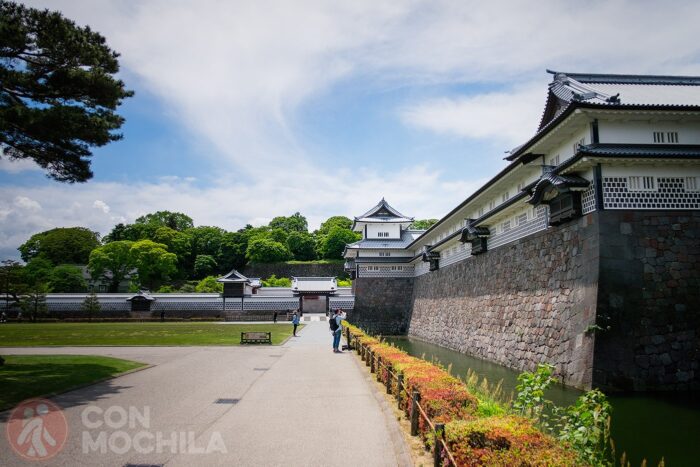
With such a history and after many reconstructions, it has become, along with Kanazawa, one of the most important corners of the entire country, receiving thousands and thousands of visitors every year.
Throughout its history, Kanazawa Castle suffered damage due to Japanese invasions of Korea, so it had to be rebuilt in 1592. In addition, moats were dug to protect against invasion.
That wasn’t the only time it had to be rebuilt. After several fires, the castle was reconstructed between 1620-1621 and again between 1631-1632.
However, the threat of fire continued. In 1759, the Great Fire of Kanazawa nearly destroyed the castle completely, prompting another rebuild in 1762, and again in 1788. Among other earthquakes and smaller fires, in 1881 it was destroyed once more.
As we see today, the Ishikawa Gate, the Sanjukken Nagaya and the Tsurumaru storage room correspond to the original structures.
However, other elements such as the Hishi yagura, the Hashizume-mon Tsuzuki or the Gojiken Nagoya storage room were rebuilt in 2001, maintaining the original construction method of 1809.
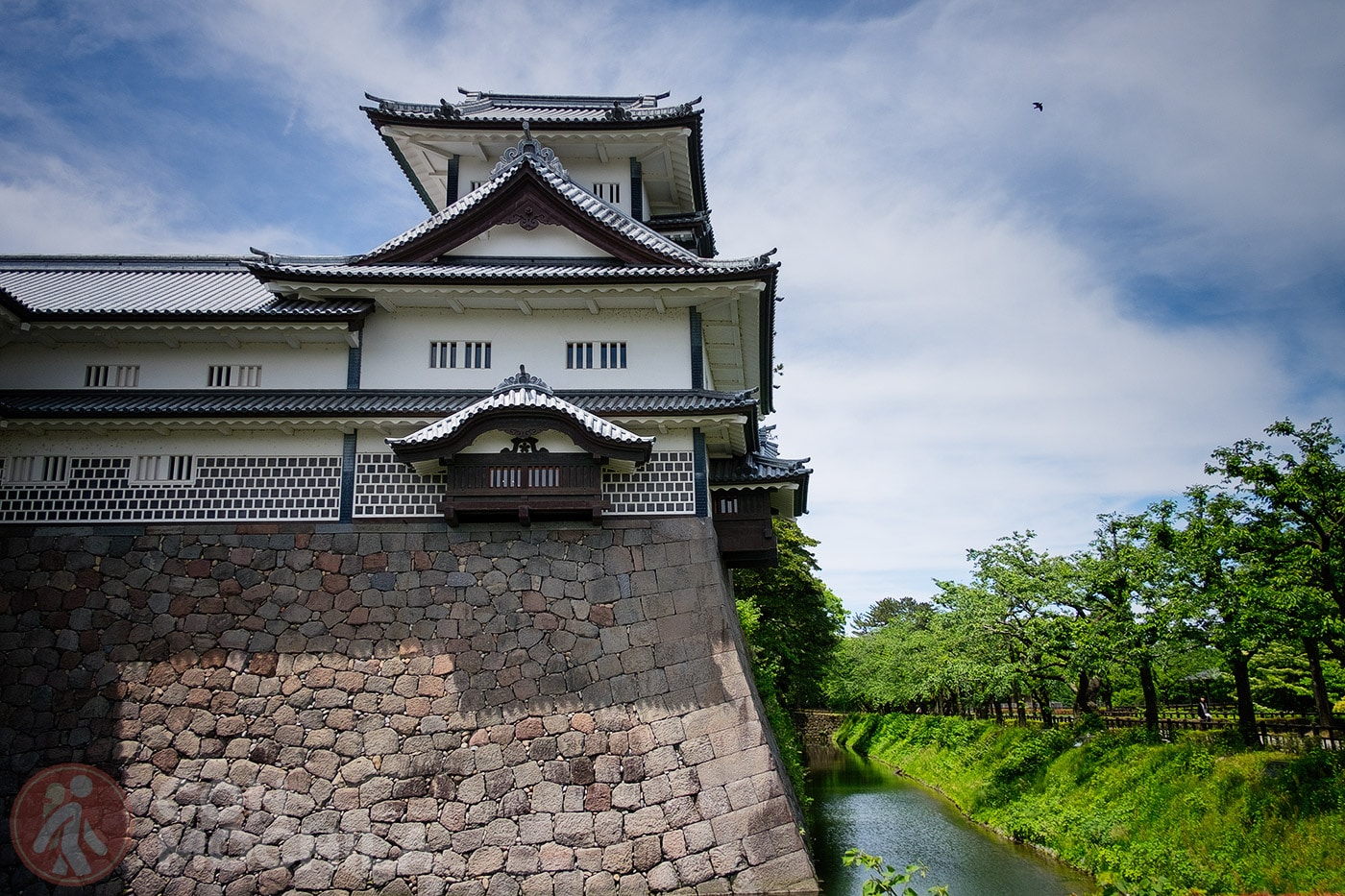
There are a pair of three-story towers called “yagura,” which literally means a weapons storage place, although it functioned as a watchtower to view the surroundings.
You will be able to see the Hishi yagura, which is the one on the corner, and then the Hashizume-mon Tsuzuki, which is above the access gate (which is accessed from the back of the castle).
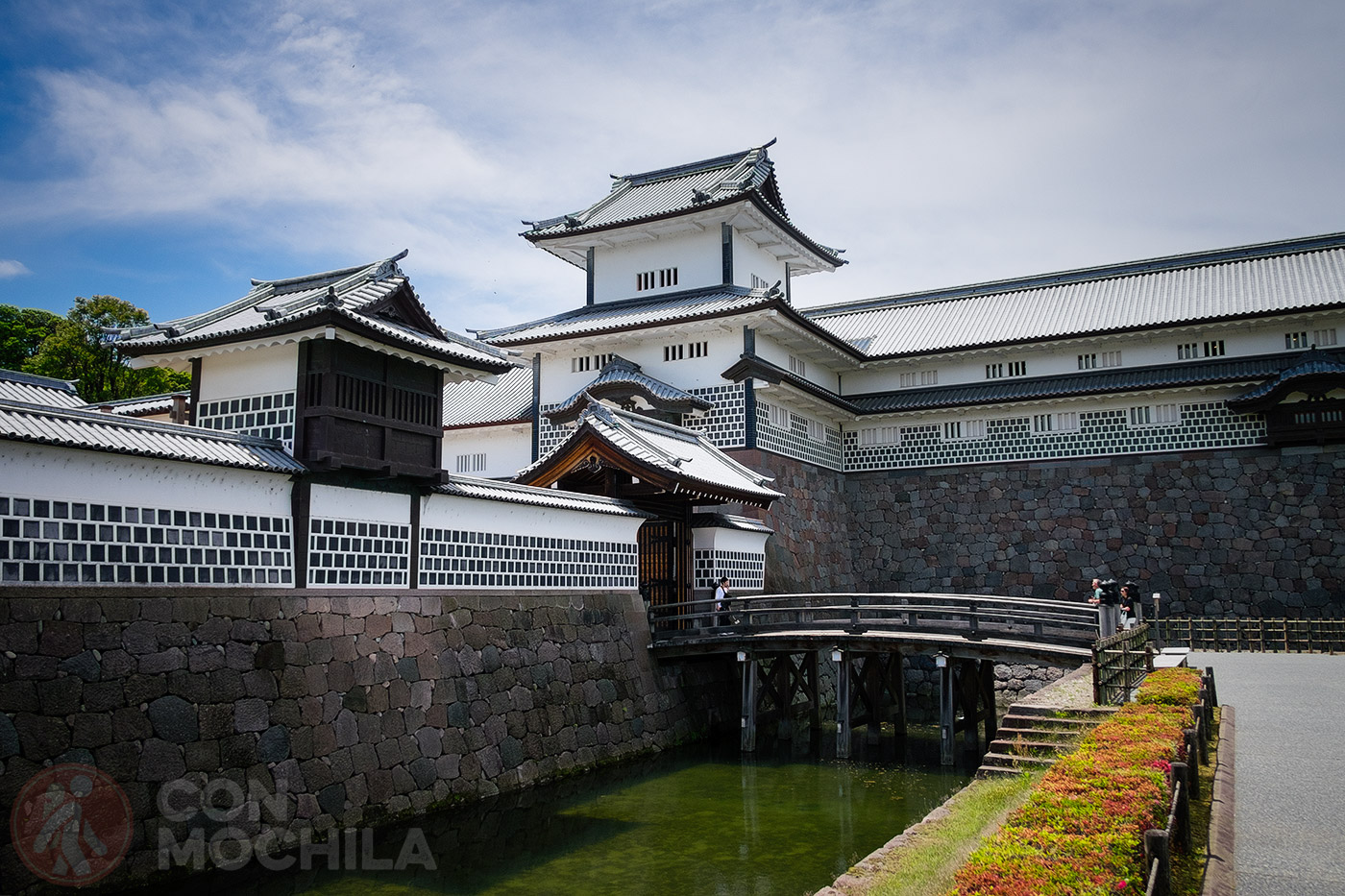
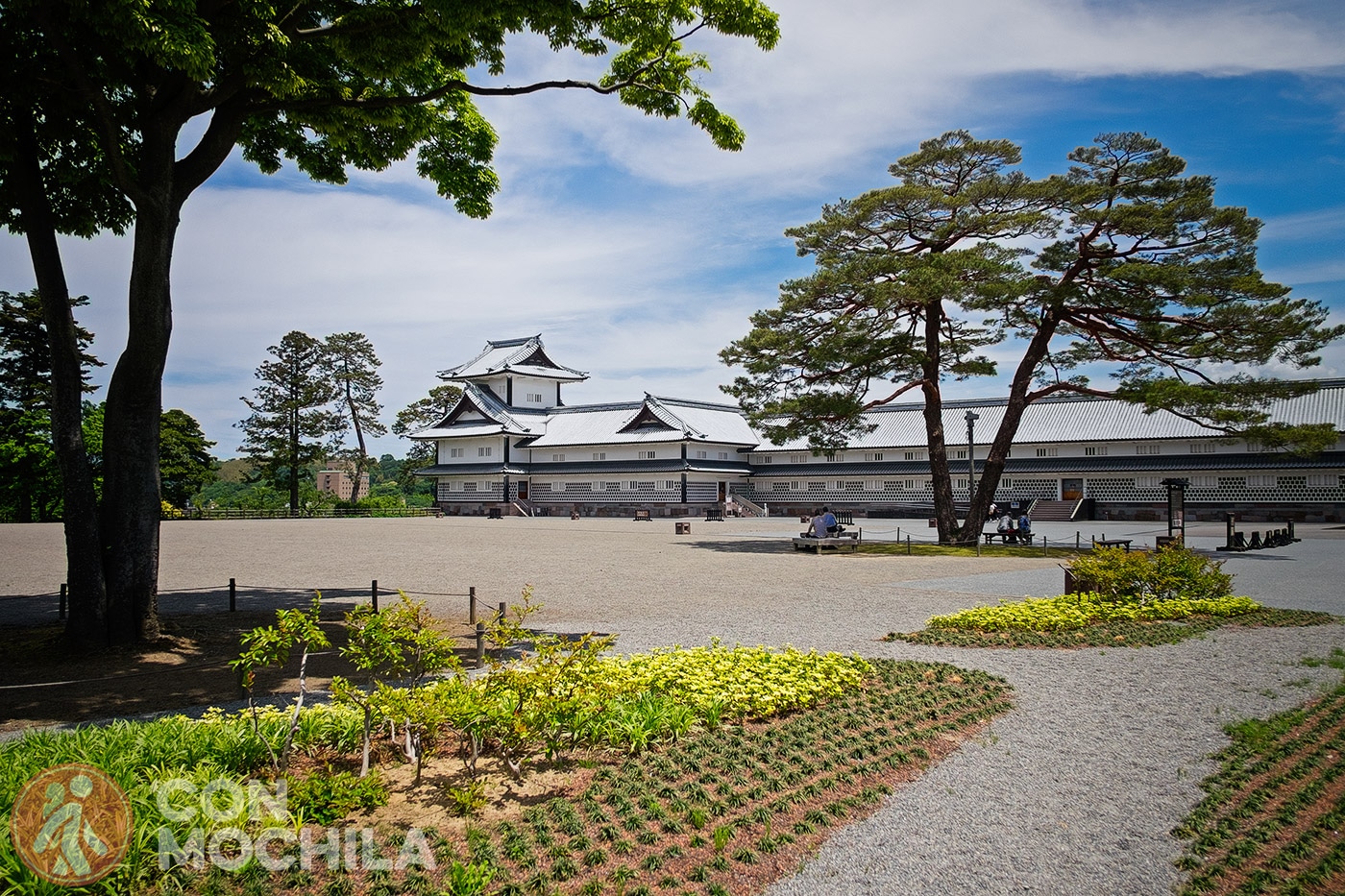
The views from the top of the towers are beautiful.
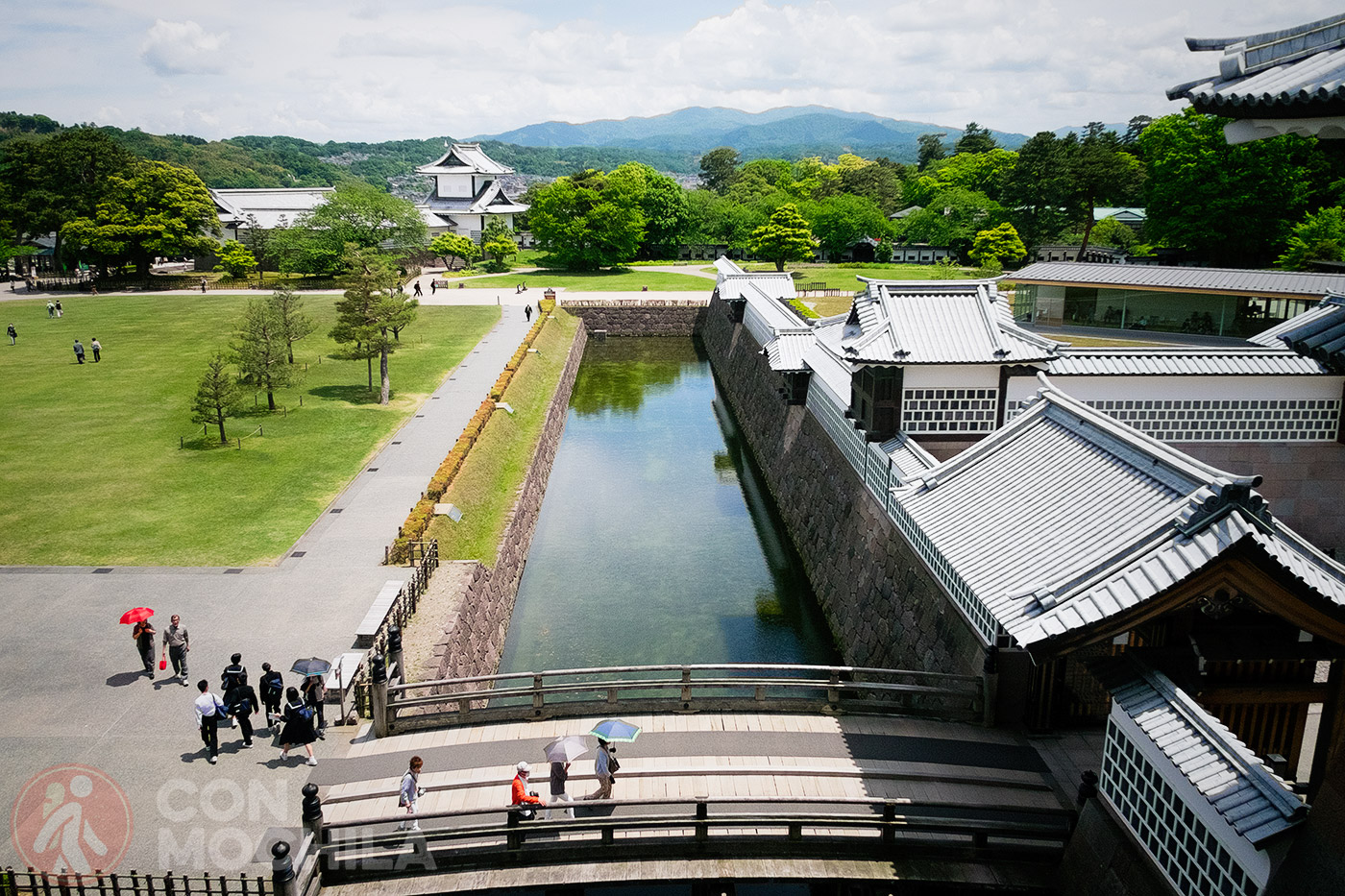
The Gojukken Nagaya, the long building between the two towers, was designed to function as a weapons storage facility and a protective wall.
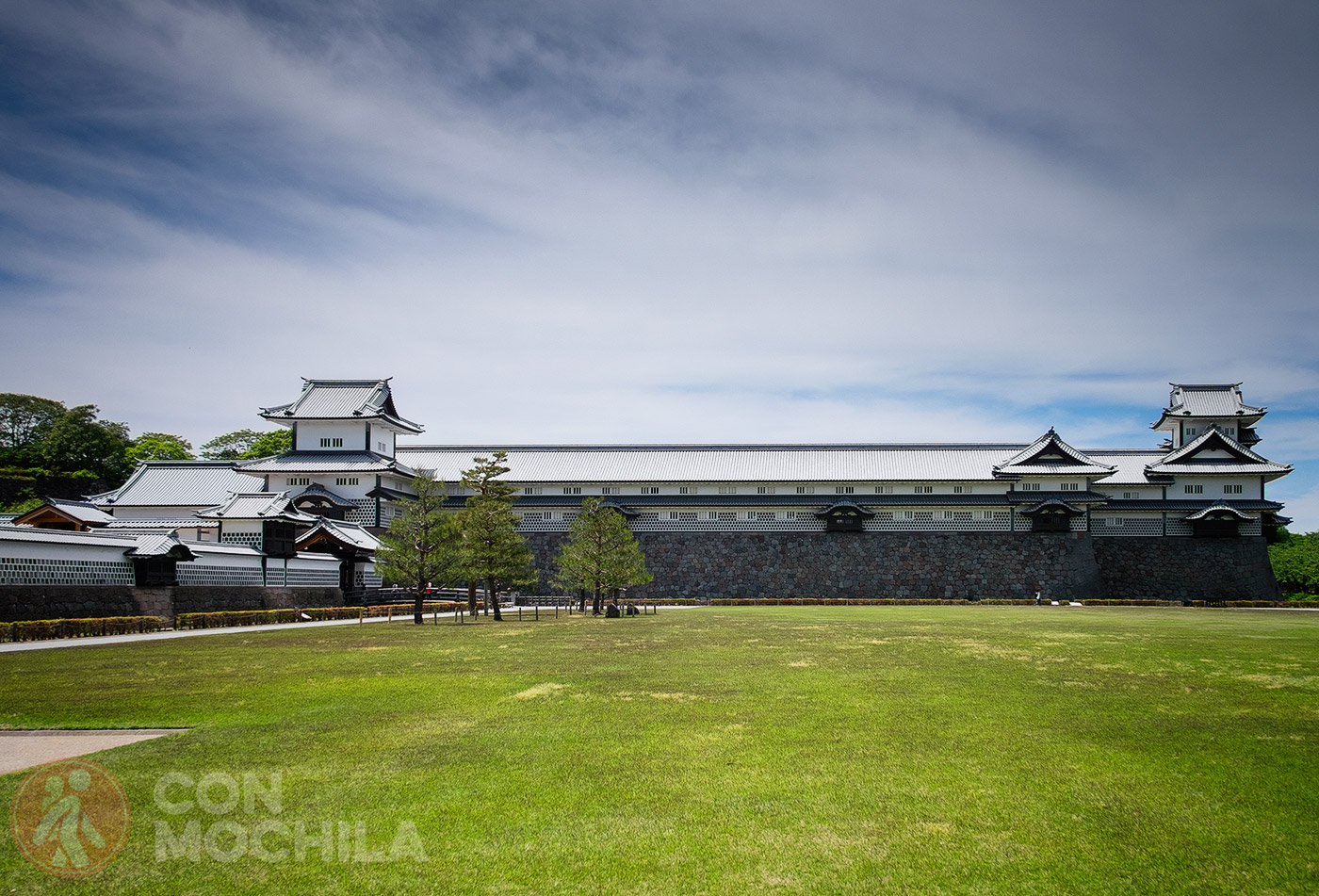
Once inside, if you look up, you can see the fine wooden structures, most of which are held together without nails or screws. The buildings in this reconstruction project are constructed according to traditional Japanese architectural methods using strong poles, beams and walls.
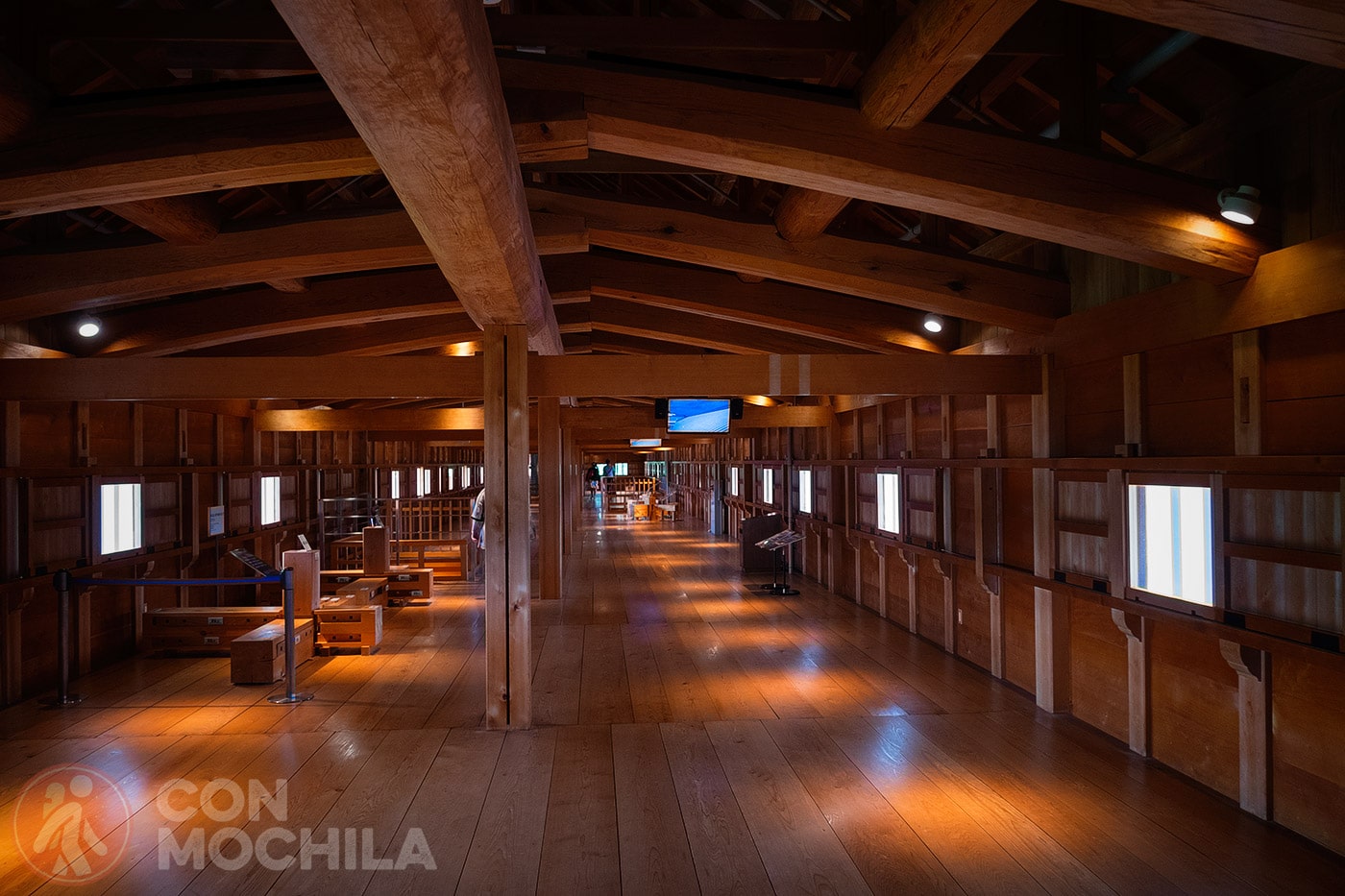

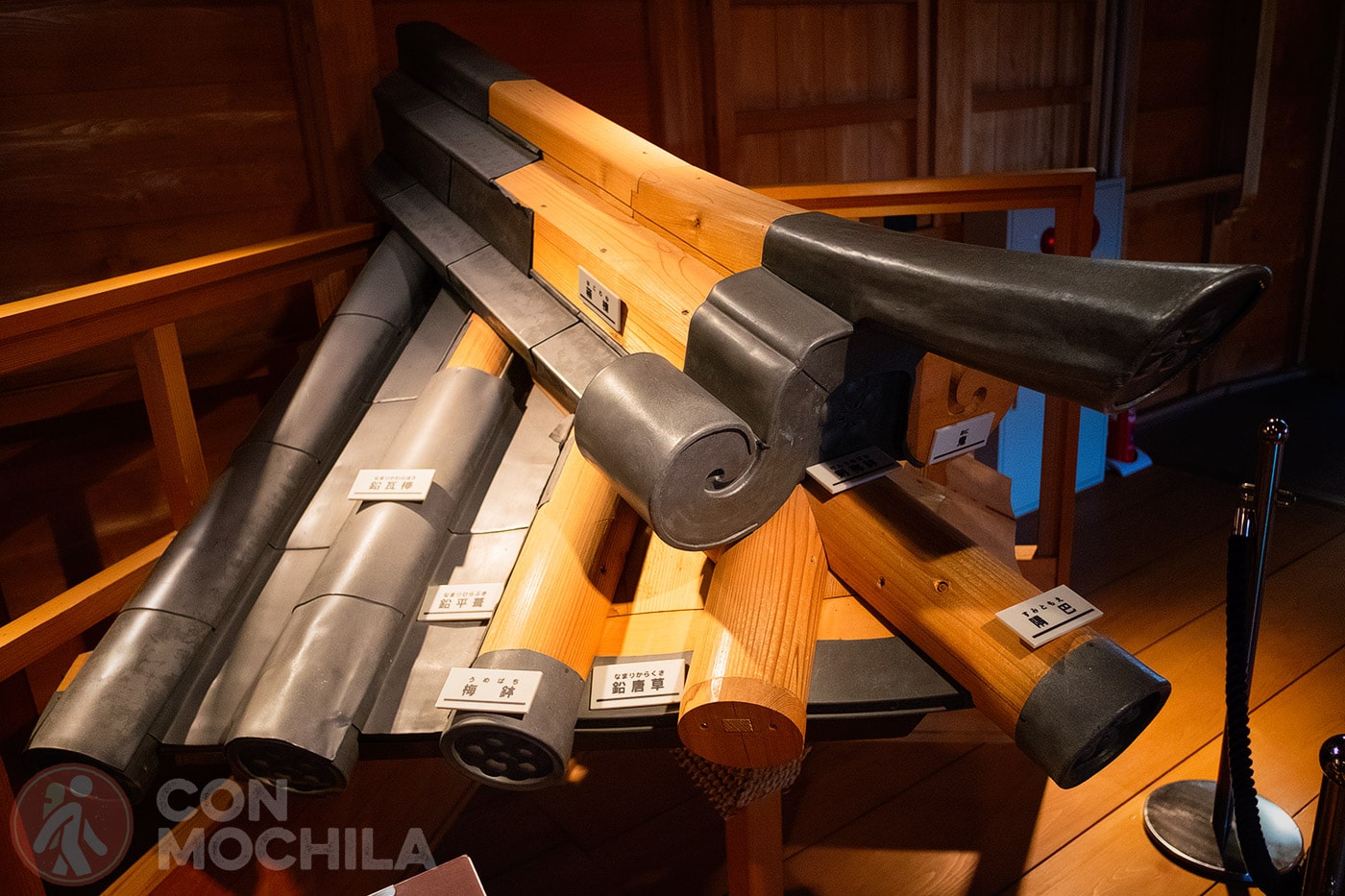
The castle is built on the highest ground between the Sai and Asano rivers and a system of moats and canals surrounds the castle for added protection.
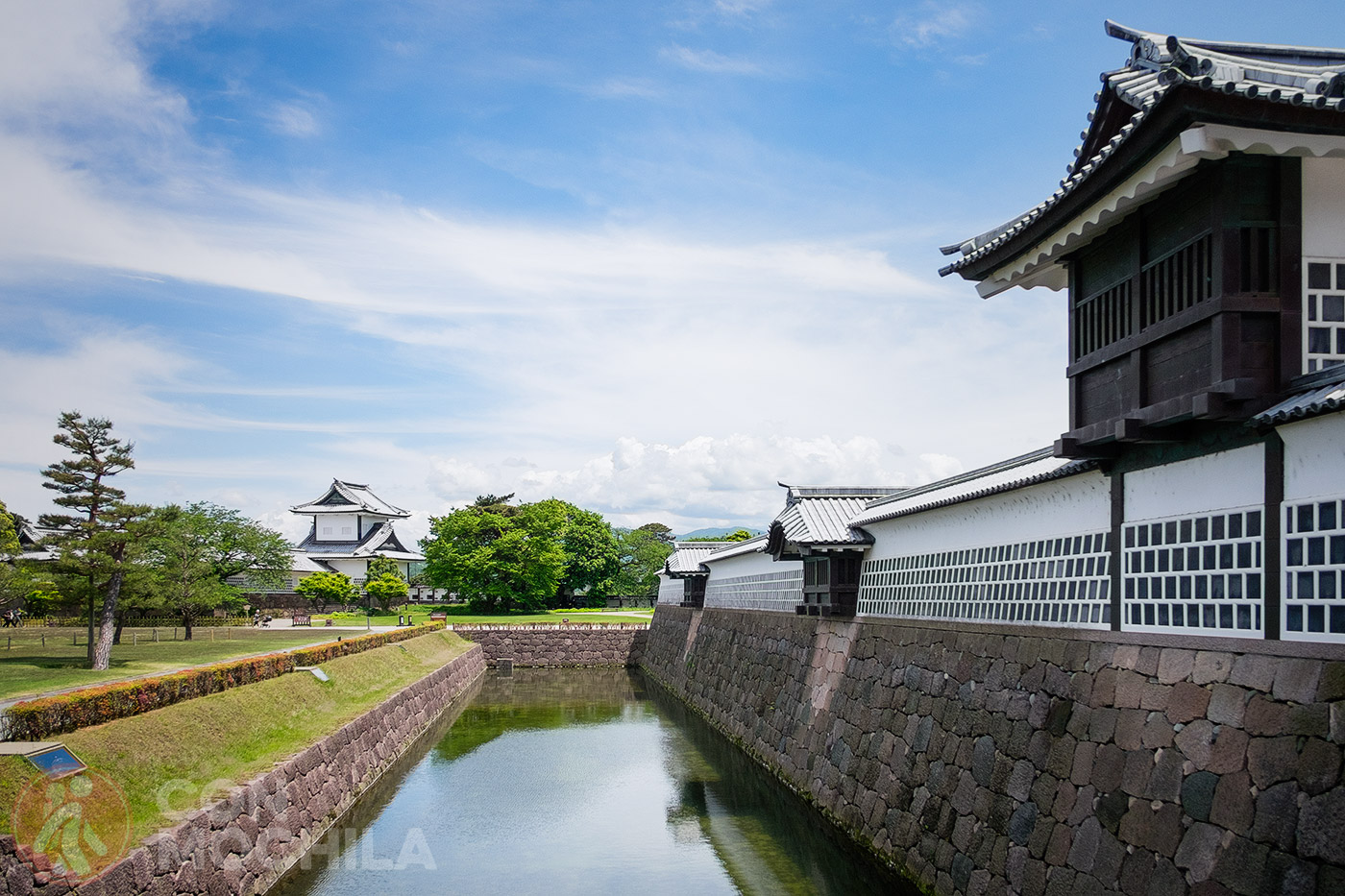
Particularly noteworthy is the Ishikawa-mon Gate, which has been designated as a “Place of Important National Value” by the Japanese government.
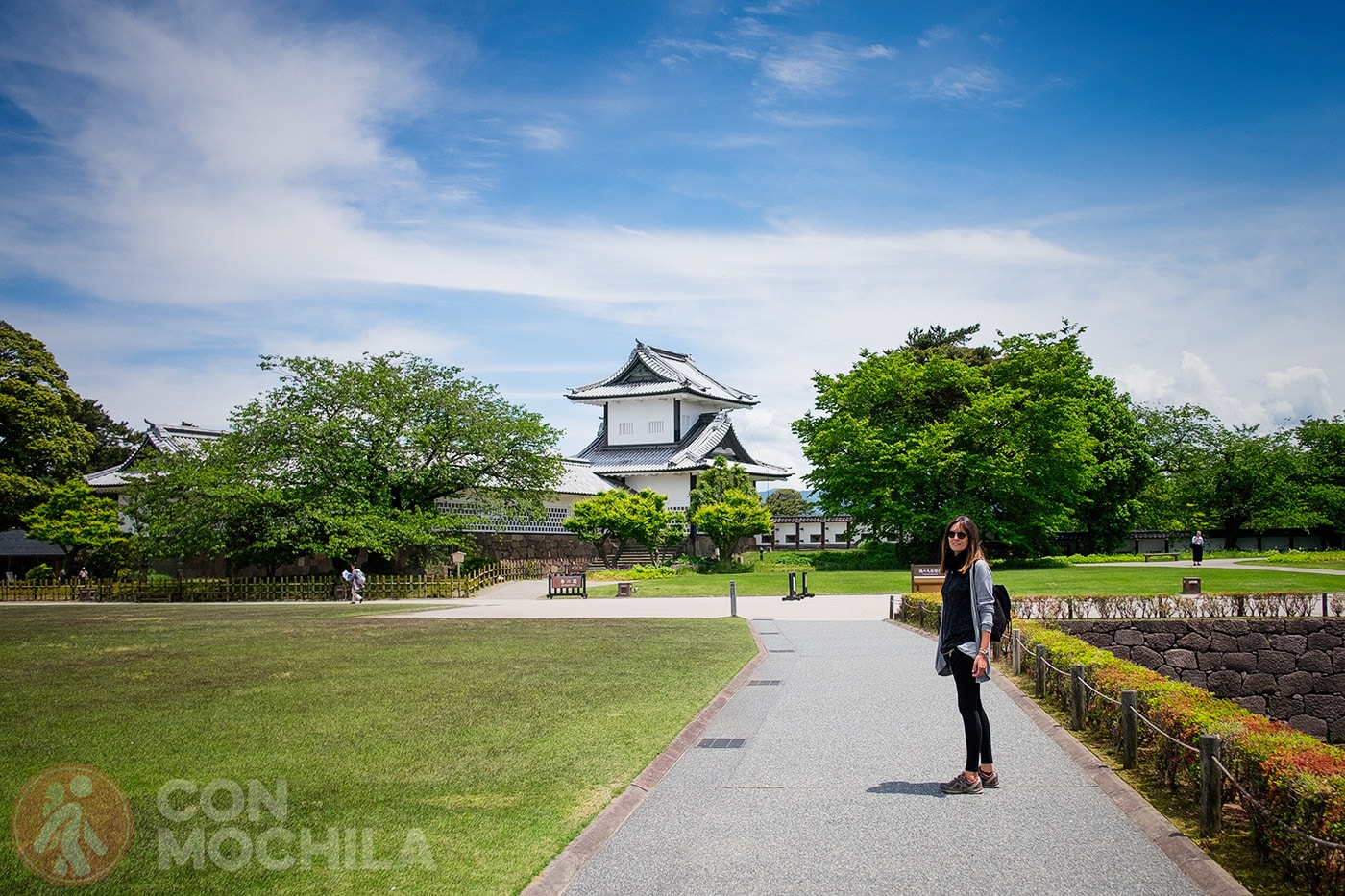
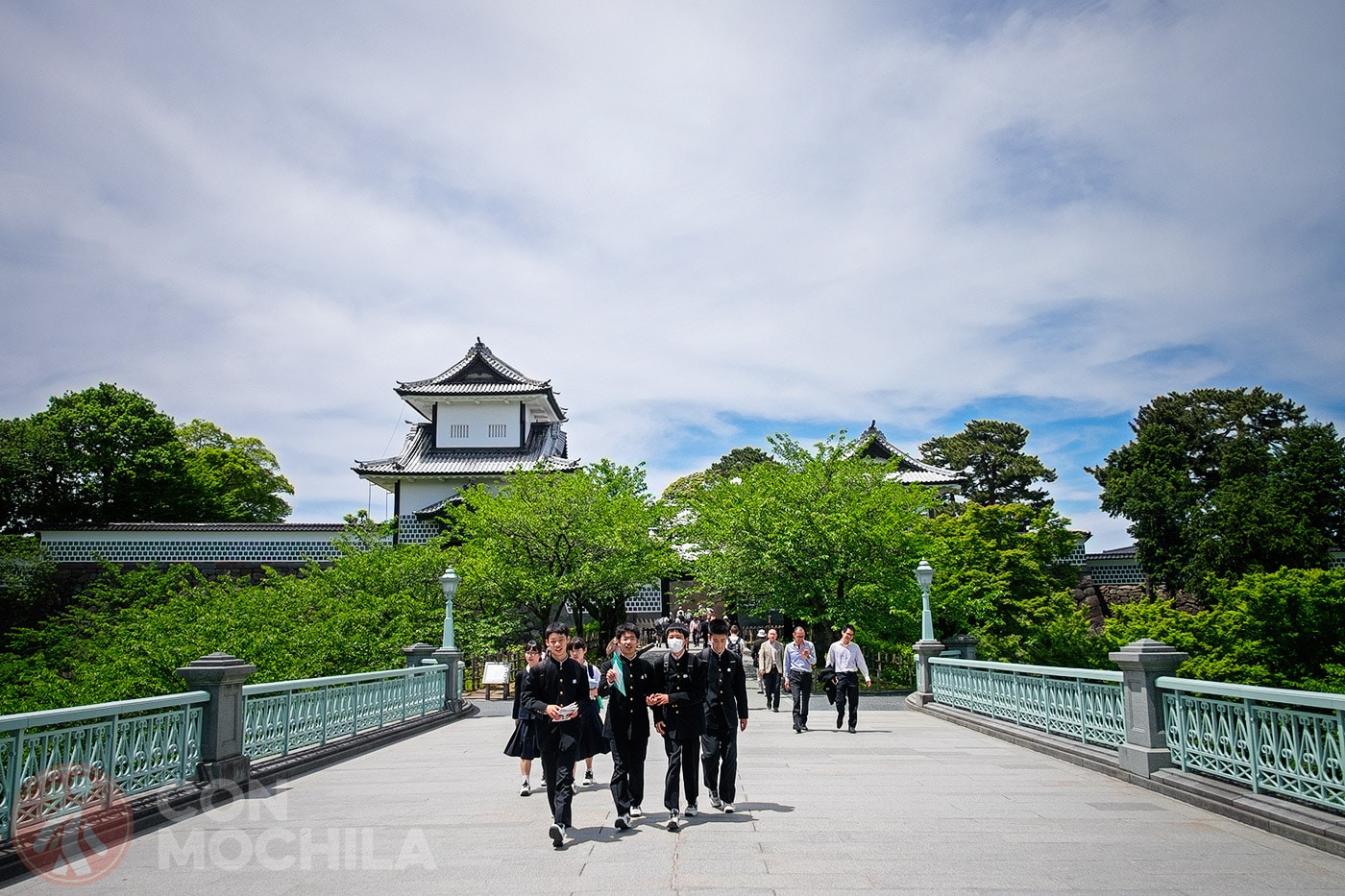
Gyokusen’inmaru Garden was built in 1634 by Toshitsune Maeda, the third lord of Kaga Domain until the abolition of the feudal system, and was continuously landscaped by successive lords of the domain.
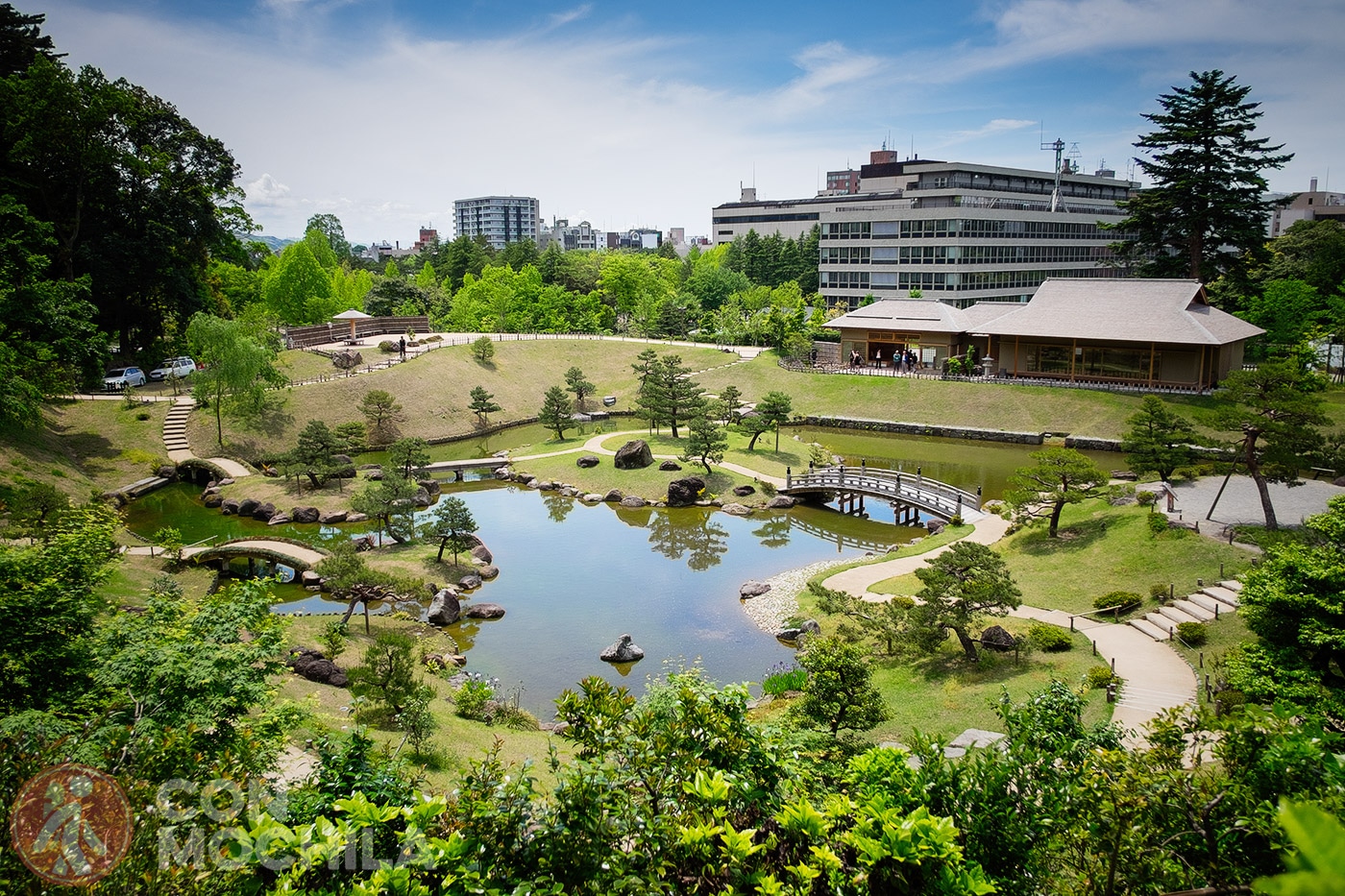
This garden is believed to have served primarily as a courtyard for entertaining guests. This garden featured a large pond in the center and paths around it for strolling and contemplating the landscape.
The castle’s distinctive whitish tiles are made of lead. The reason for this is that not only are they fireproof, but legend also has it that during times of siege, the tiles could melt and become bullets.
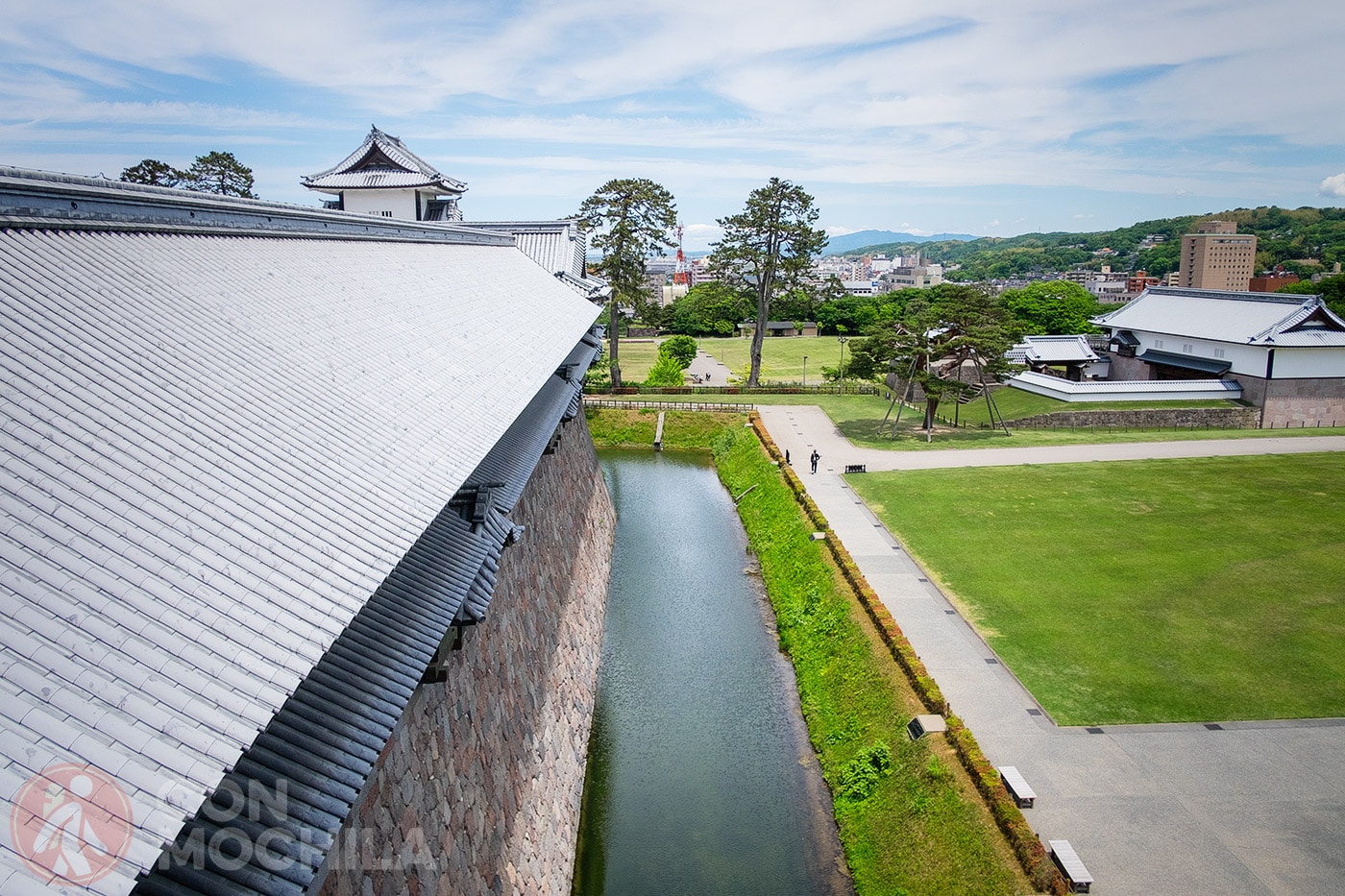
You might also be surprised to know that during World War II the facility was used as a base of operations for the Ninth Division of the Imperial Japanese Army.
Furthermore, Kanazawa University was located on the castle grounds until 1989, after which it moved to the outskirts of the city.
Kanazawa Castle is in a prime location, next to the Kenrokuen Gardens, so if you are in the vicinity you can get there quickly on foot.
There is also a highly recommended tour of Kanazawa that will take you to the castle and other interesting places in the city in a comfortable and worry-free manner.
If you are further away you can take the Hokutetsu bus from Kanazawa Station, as well as the tourist Kanazawa Loop Bus or the Kenrokuen Shuttle Bus (whichever suits you best).